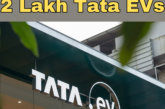
EV seems to be the buzzword now in India and rightly so. With a strong government push, a strong industry move towards clean mobility and an increased sense of public awareness about health issues, India’s move towards EV is a concept whose time has arrived.
So while the numbers and the brouhaha around EV is valid, it is important to understand the challenges in India towards a better and faster adoption of EV. I do not intend to be a naysayer here, but important to separate the hysteria from reality. Let’s call it the 4C

Cost: EV is a disruptive concept. One no longer requires huge “engineering” and design given that the power train is a lot simpler with no massive engine and the technology and capex required to support that development. One would hence assume the cost of the EV would be drastically low. Unfortunately, the cost of an EV in India is determined by the cost of the battery which at this time constitutes around 35% of the cost of the EV. The cost of the battery in turn governed by international dynamics and who holds the minerals required for battery production. Call it the new ‘OPEC’ for batteries which determines the cost of battery. Companies in India are working on producing Lithium based batteries in India which is bound to bring battery prices down. But like Solar panels, China will determine the price points internationally given their production capacities and their access to minerals like Cobalt.
Government schemes and subsidies are helping open the discussions if not really bring down the prices. Nonetheless, the cost of EV is expected to come down by another 25% by the end of 2021, so I call this period (2019-2021) as the priming period of EV in India. i.e. during this period people should focus more on building the infra which will help run EV smoothly in the near future.
The other angle is the cost of setting up EV charging or EV battery swapping infrastructure, which in India will be determined by the cost of land. We see government intervention in opening up available land infrastructure for setting up charging stations, but the attempts continue to be fragmented and not aligned to a single vision. This is where private participation plays a key role and companies like Magenta Power are coming up with Indian Solutions to Indian Challenges to build the EV charging ecosystem.
Convenience: Today the number of public charging stations or the lack of it determines the inconvenience in driving around an EV. In EV parlance it is called as ‘Range anxiety’. While a typical 4 wheeler in India does not travel more than 100 Kms per day except on weekend drives, this makes EV viable for more than 80% of current 4 Wheeler ownership and transition. But the anxiety is real, a bare minimum set of charging stations within city limits will help open the market for EV in urban areas.
In the rural areas, the convenience factor switches from availability of charging stations to availability of power and also quality of power. However, it is mofussil towns which have adopted EV a lot faster than the metropolitan cities. The 3 digit rate of growth in 2W and 3W EV segments in India is testimony to that.
From a technology perspective, the improvement in convenience will be driven by my ‘Law of Two and a Half” (borrowed heavily from Moore’s law of Computing) namely, ‘The ability of the chargers to supply and batteries to accept power will double every two years’ Energy densities of the batteries to hold power will increase such that size of batteries for given power will reduce by half every two years.
Charge Anxiety: In India and Internationally, there is always a worry that your vehicle may or may not be compatible with the available charger. This is because of lack of standardization or rather a case where the industry in evolving. Simple compatibility issues like sockets can make the charging experience cumbersome and in many cases painful. However, this challenge is slowly but steadily getting minimized as standards in charging especially on the AC charging side are falling in place. And given that the bigger number of EVs are the 2Wheelers and 3 Wheelers this Universal AC charging solves the problem for most if not all.
Clarity: The growth of EV adoption in India will be determined by the clarity or lack of it. As I type this, there is a new policy from the Ministry of Power on Public Charging Infrastructure. This policy which has some definite positive mandates, actually makes setting up of Public Charging Stations (in its truest sense) absolutely unviable. There are 5 different departments which govern various aspects of the EV policy in India and a non-comprehensive view of definitions and policies will make adoption that much more slower. Off course the industry driven by social cause will find its way, but with that much more uncertainties to manage.

Startups like Magenta believe that EV adoption should follow a systematic and structured solution approach. They are guiding many OEMs and townships in setting up the right infrastructure to make EV adoption easier and faster. Trying to directly copy the European EV infrastructure models will not work. There are multiple solutions that they are bringing to the market, solution made for India and made in India and we are sure that our next generation will have much cleaner roads to travel in soon.
Special thanks to the CEO of Magenta Power Mr. Maxson Lewis for sharing this wonderful article with us.
For any promotions and advertisements on electricvehicles.in, please send an email to support@electricvehicles.inFor the latest electric vehicles news, followelectricvehicles.in on Twitter, Instagram,Facebook and subscribe to our YouTube Channels-English,Hindi & Telugu







